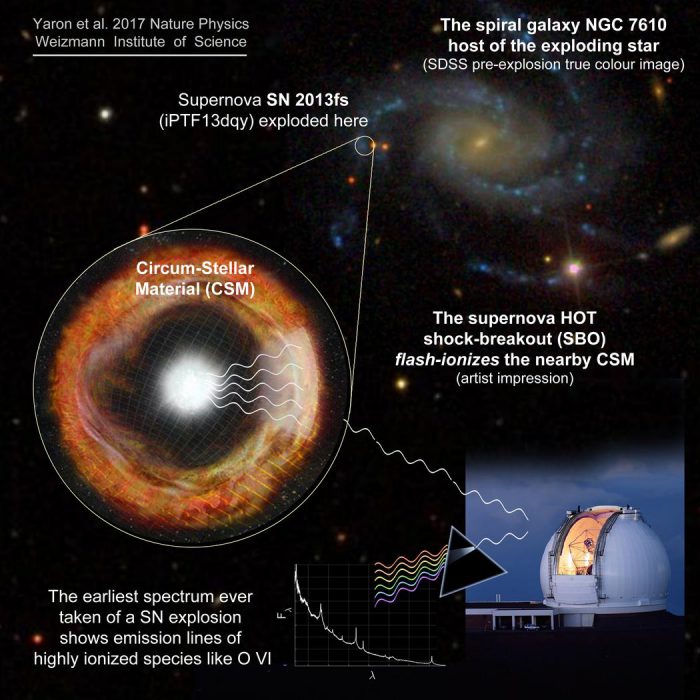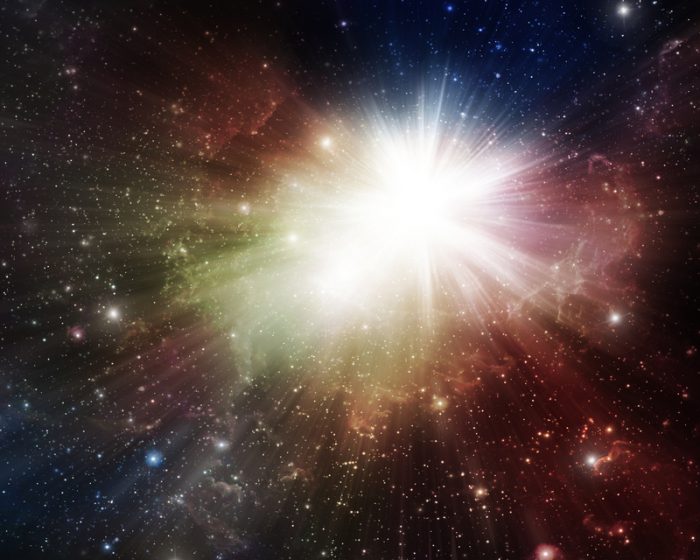A supernova is one of the universe's most stunning displays of power. This happens when an old star expands, runs out of fuel, and finally explodes in a massive, solar-system-destroying ka-BOOM!
Words really aren't enough to describe what happens during a supernova. Imagine a star so large that it would reach past the orbit of Mars if it was at the centre of our solar system. Now imagine that star suddenly bursting apart with such force that it sends matter out in all directions at 30,000 km (19,000 mi.) a second. This shock wave flies far outside what was once known as that star's solar system. It's so powerful, it can provide energy to kick start the birth of new stars (nova means "new", don't you know!).
Let's just say that you wouldn't want to be anywhere near one of these.
Late to the party
But, it is something that scientists would love to see happen. Easy peasy, right? After all, an explosion that huge must be unmissable, no?
Except as big as a supernova is, it's still just a tiny drop in the vast ocean of the universe. And finding a supernova as it is happening is incredibly difficult.
The Crab Nebula is a very famous mass of supernova leftovers. (Getty Embed)
Scientists do have plenty of examples of the leftovers of a supernova. These are often seen as glowing clouds of gas and dust known as nebula. Sometimes scientists have even been able to see a supernova only a week or so after it occurred. But by this time, the moment of explosion is long past.
Caught in the act... almost
That's why SN 2013fs is so special. This recent supernova was observed only three hours after it happened. It was close enough to the explosion that scientists were able to witness the shock wave pass through stellar matter near the star. In other words, they saw things that they've never witnessed before because that stuff is literally blown away before they can see it. Wild stuff!

This image was put together by Ofer Yaron, the astrophysicist from the Weizmann Institute of Science in Israel who is studying it. It shows the location of it and the first moment in the supernova that was witnessed. (O. Yaron)
And where did this happen? The supernova was found in galaxy NGC 7610, about 160 million light years from the Milky Way. So this means that even though the phenomenon was observed only "three hours" after it happened, it actually happened over 100 million years ago.
Still, this is the closest we've come yet to catching a supernova in the act. The knowledge gained in observing SN 2013fs will not only tell scientists more about what exactly happens when a massive star explodes, but it may even help us predict when another one is about to occur.
So smile, universe, and say, "Supernova!" We'll get the perfect picture yet!
 So far, we only have artist's impressions of what a supernova would look like. But we're getting closer to the real thing... (© Kevin Carden | Dreamstime.com)
So far, we only have artist's impressions of what a supernova would look like. But we're getting closer to the real thing... (© Kevin Carden | Dreamstime.com)










Amazing…glad it happens far, far away!
😳 😳 😳 😳 ❗ 💡 🙂 🙂 🙂 🙂 🙂 😉 😉 😉 😀 😀 😀 🙁 🙁 🙁 🙁 😛 😛 😛 🙁 😛 😮 😮 😮 😮 😡 😡 😡 😡 😡 😡 😐 😐 😐 😐 😐 😕 😕 😕 😕 😕 😎 😎 😎 😯 😯 😯 😯 😯 😥 😥 😥 😥 😥 😥 😯 😥 😥 🙄 🙄 🙄 🙄 🙄 💡 💡 💡 💡 💡 ❗ ❗ ❗ ❓ ❗ 😳 😳 😳 😳 😳 😳
Cool?????
❗ 😯 🙂 😉 😀 🙁 😛 😮 😡 😐 😕 😎 😯 😥 😆 🙄 💡 ❗ ❓ 😳